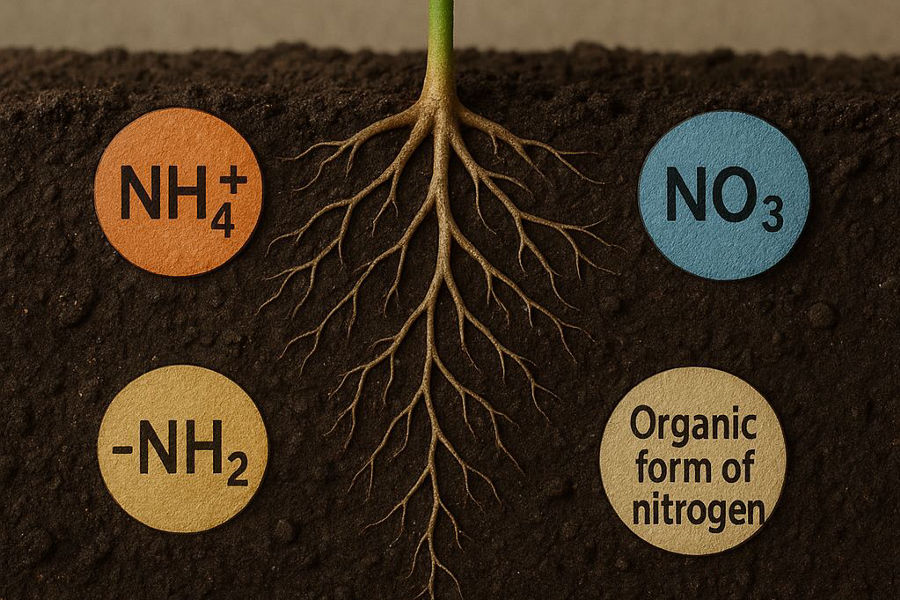Which Form of Nitrogen is Best for Crops?
Nitrogen is one of the most important nutrients for crops. It is often called the “engine of plant growth” because it helps in building proteins, chlorophyll, and enzymes. Without proper nitrogen, crops remain yellow, weak, and give low yields. Farmers use nitrogen fertilizers like urea, DAP, and ammonium nitrate, but do you know that nitrogen exists in different forms in soil? Each form has its own benefits and limitations. Let’s understand them in detail.
Ammonium Form (NH₄⁺)
Ammonium nitrogen is a positively charged form that sticks to soil particles. Because of this, it does not leach easily with water and remains available to plants for longer. Crops like rice, which are grown in flooded conditions, benefit a lot from ammonium nitrogen. It promotes strong root growth and balanced development. However, too much ammonium in soil may cause toxicity and reduce crop growth.
Nitrate Form (NO₃⁻)
Nitrate nitrogen is a negatively charged form. Unlike ammonium, it does not bind with soil and is very mobile. This means it can easily move with rain or irrigation water and sometimes even reach groundwater. Nitrate is the fastest and most easily absorbed form of nitrogen for plants. It promotes quick green growth, larger leaves, and higher yield. But farmers must be careful because if applied in one heavy dose, much of it gets wasted through leaching. That is why split application is best for nitrate-based fertilizers.
Amide Form (–NH₂)
This form is mainly present in urea, the most common fertilizer used by farmers. Plants cannot absorb amide nitrogen directly. First, it changes into ammonium through soil microbes and then further into nitrate. Urea is cheap, effective, and widely used, but if left on the soil surface, a lot of nitrogen can escape into the air as ammonia gas. To avoid this loss, urea should always be mixed into the soil or applied with irrigation water.
Organic Forms of Nitrogen
Organic nitrogen is found in compost, crop residues, farmyard manure, and other organic matter. Plants cannot use it directly. Soil microbes slowly convert it into ammonium and nitrate through a process called mineralization. This release is slow but long-lasting. Apart from nitrogen, organic matter also improves soil health, water holding, and microbial activity, which benefits crops in the long term.
Which Form of Nitrogen is Best?
There is no single answer because each form has its role. Nitrate is best for quick growth, ammonium is more stable in soil, amide (urea) is most economical, and organic nitrogen is best for soil health. The smartest way for farmers is to use a combination of these forms based on the crop, soil type, and irrigation method. For example, rice grows well with ammonium, while vegetables and fruits benefit more from nitrate-based fertilizers.
